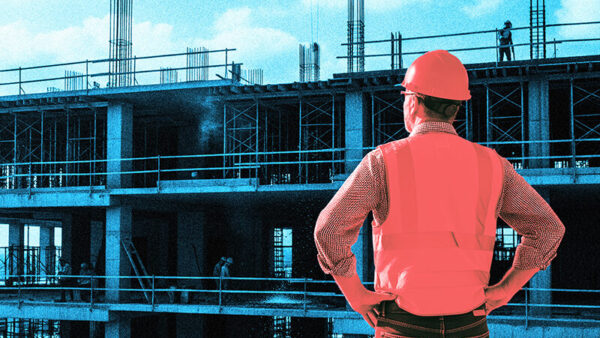As industry and the Building Safety Regulator trade blows over the reasons for delays in Gateway 2 approvals, does Dame Judith Hackitt’s reference to a ‘Gateway 2.5’ reveal how government might try to break the logjam? Angus Dawson examines this issue.

In her recent evidence before the House of Lords investigation into the Building Safety Regulator (BSR), Dame Judith Hackitt acknowledged that the industry has faced significant challenges in meeting the requirements at Gateway 2, leading to delays and friction between the industry and the BSR.
To address these issues, Hackitt floated the idea of a more flexible, staged approach to the Gateway process – which she referred to as ‘Gateway 2.5’.
She set out that if there is a genuine justification for why certain aspects of the design of a higher-risk building cannot be finalised at Gateway 2, there could be a mechanism for conditional approval, provided that the outstanding issues are resolved and brought back to the regulator for approval before Gateway 3.
Hackitt indicated that discussions are ongoing between the BSR and the industry to develop this staged approval process, which would allow for some flexibility while maintaining the integrity of the regime.
This is apparently being considered as a way to address concerns about the challenges of marrying up design-and-build contracting with the Gateway 2 process, which Hackitt sees as being one of the fundamental causes of delay in getting through Gateway 2.
Whilst the industry might have a healthy debate about whether design and build is the fundamental cause of delays with Gateway 2 applications, as opposed to the lack of guidance and resource from the BSR, Hackitt’s suggestion could provide a pathway to a smoother Gateway 2 process.
Consistency with CLC guidance
Helpfully, the existing regulations for higher-risk buildings already cater to staged Gateway 2 approvals and “approvals with requirements” (a conditional approval regime), so a change of law is not necessarily required.
A more accommodating approach by the regulator to the use of these routes could achieve quicker Gateway 2 determinations while retaining the oversight that we all recognise is needed to ensure compliance with building regulations.
Hackitt’s comments are also consistent with certain signposting in the latest Construction Leadership Council (CLC) guidance on Gateway 2 applications. The CLC guide expands on “approvals with requirements” and the level of detail required as part of the original Gateway 2 application if this approach is to be used.
However, the supporting documents accompanying the CLC guidance suggest that approval with requirements should only be used on a planned basis where it is not reasonably practicable to provide all details evidencing compliance with the functional requirements of building regulations in the original Gateway 2 application.
It is not clear at this stage whether progressive design and procurement will be accepted as justification for going down this route.
A new direction of travel
The additional CLC guidance on staged applications, which seems to be at the heart of Hackitt’s suggestion, is also more limited, encouraging early engagement with the regulator (something the industry would welcome).
At this stage, the CLC guidance does not seem to get us to the Gateway 2.5 position Hackitt hinted at, but it may be a further indication of the direction of travel.
Operating a Gateway 2.5 approach would likely be welcomed by the industry as it could have multiple benefits: it could significantly reduce the volume of information in the initial Gateway 2 application, hopefully shortening timelines for determining applications, while retaining checks and balances for further design at a later stage.
It could also speed up CM projects, or those with early package procurement, as the regulatory process would be better aligned with the procurement structure.
The industry will watch with anticipation how these discussions develop.
Angus Dawson is a partner in the construction and engineering group at Macfarlanes.











